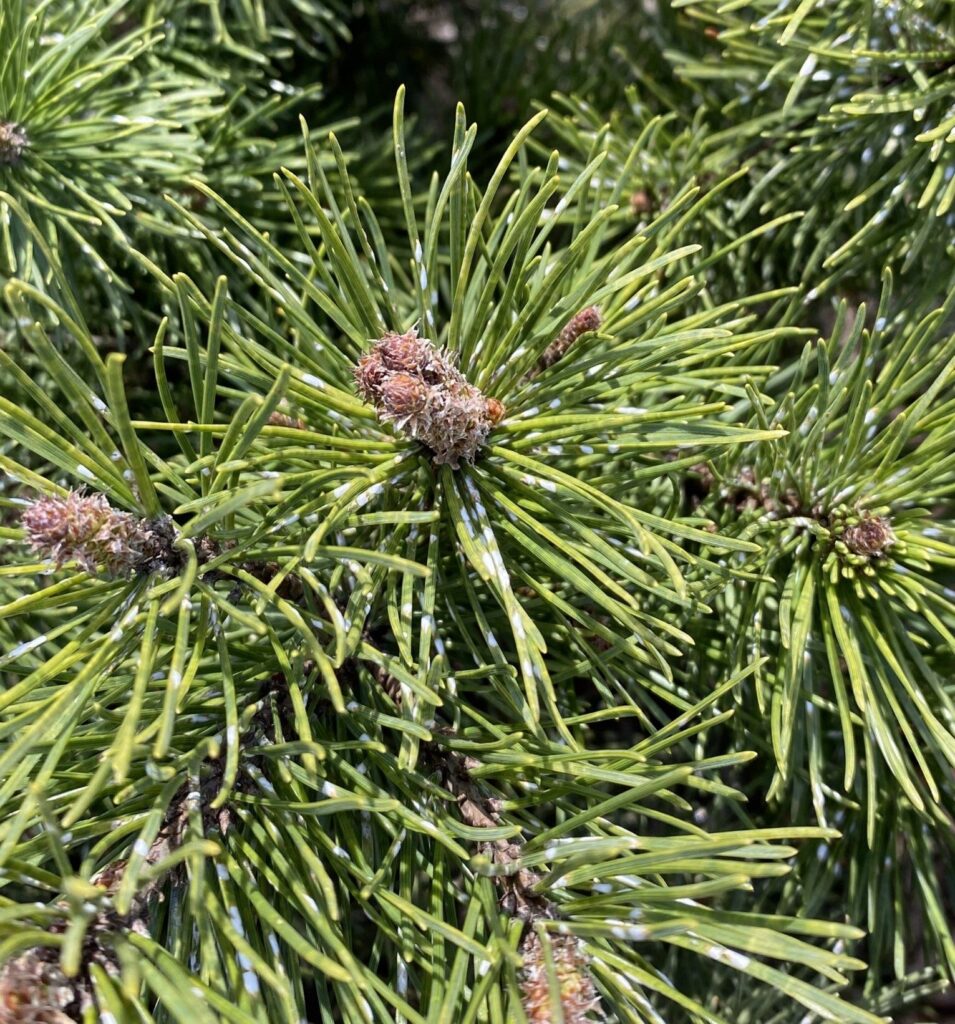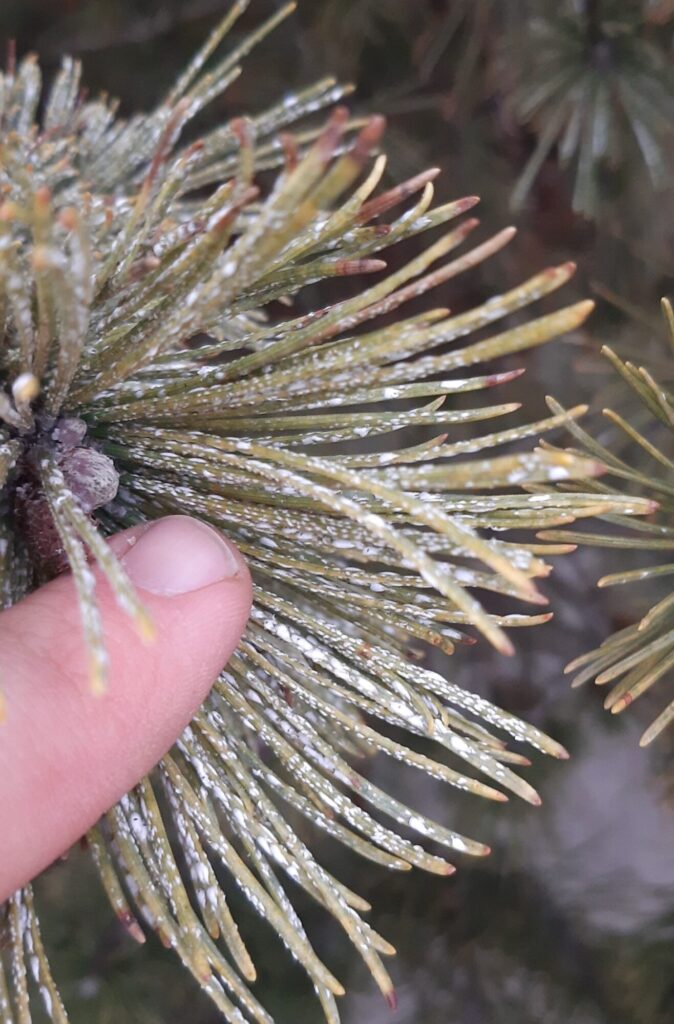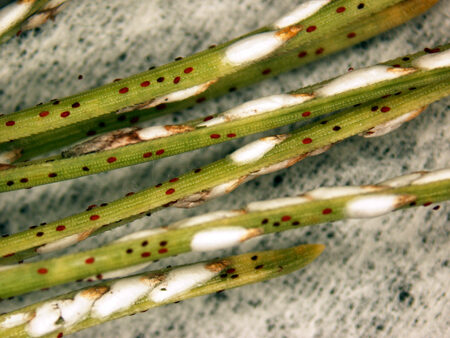What is Pine Needle Scale?
Have you ever looked at a pine tree or shrub in summer or spring and thought to yourself, why does it have snow on it? Believe it or not, those white spots on the needles are an insect! Pine needle scale are a common armored scale in the Midwest. Their preferred host is Pinus spp. (pines) but can also be found on spruce, douglas fir, and true firs. They cause disfiguration and decline of trees, and may even be fatal to trees in very severe infestations. They cause damage by feeding on the tree needles with their sucking mouthparts. Over time, the needles will discolor, die off, and leave the tree defoliated.

Symptoms to look for:
- White spots on needles are a sign of insect presence
- Heavy infestations will appear like they have artificial snow on them
- Discoloration of needles and early needle drop in heavy infestations


Life Cycle
Pine needle scale, a common pest in our area, undergoes two generations annually. The first generation hatches when Growing Degree Days (GDD50) reach around 300, coinciding with the bloom of Red Horsechestnut (Aesculus x carnea). The second generation emerges at approximately 1350 GDD50, aligning similarly with the first bloom of Rose of Sharon (Hibiscus syriacus). These pests overwinter as eggs beneath their armored covering, hatching in spring. Wind disperses the newly hatched crawlers, which spend a few days moving around before settling to feed and develop their protective waxy scale covering. Males in the population develop wings and use flight to locate mates.

Photo credit: Howard Russell, MSU Diagnostic Services
Control
Small infestations, if discovered early, can be pruned out or mechanically removed from needles. Natural predators include lady-beetles which will generally control infestations in favorable conditions. Maintaining proper plant health with fertilizing and proper pruning helps plants stay resilient to infestation. Contact sprays are effective during crawler emergence and should be done twice per season in severe infestations. Systemic insecticides need to be timed correctly for uptake before crawler emergence. Dinotefuron is water soluble enough for control.
Dealing with pine needle scale is crucial for maintaining the health and beauty of your trees and shrubs. At Homer Tree Care, we have the expertise and control methods to assist with pine needle scale issues. Whether it’s pruning out small infestations, using contact sprays during crawler emergence, or employing systemic insecticides, our arborists can provide effective solutions tailored to your specific needs. Don’t wait until the damage is severe; contact us today for a free estimate and let us help protect your trees from pine needle scale infestations.
